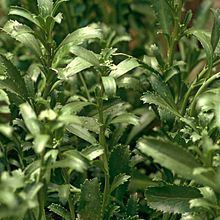Rank Species | Genus Lepidium | |
 | ||
People also search for Lepidium flexicaule, Lepidium oleraceum | ||
Lepidium banksii, known as coastal peppercress, is a rare species of flowering plant from the Brassicaceae family. It is endemic to New Zealand, formerly found around the coast of the northern South Island but now critically endangered.
Contents
Discovery and description
Coastal peppercress was first collected for culinary purposes: by Cook, in 1770 in the Marlborough Sounds, along with its relative Lepidium oleraceum, as a treatment for scurvy. Both species are members of the Brassicaceae or cabbage family and contain vitamin C. It was collected again in 1827 by Dumont d'Urville in Queen Charlotte Sound and Astrolabe Harbour, and from those specimens was described by Thomas Kirk in 1899 and named after Sir Joseph Banks, the naturalist on Cook's first voyage.
Distribution
L. banksii is strictly coastal, growing in coastal boulders and on shell banks in estuaries. Formerly it was found in the northern South Island, from Karamea on the West Coast to Tasman and Golden Bays and the Marlborough Sounds. More recently, it has been recorded from just two localities: the Waimea Estuary near Nelson, and north of Totoranui in Abel Tasman National Park.
Conservation
L. banksii is functionally extinct in the wild: there are no naturally occurring plants remaining, and its population is dependent on cultivation and planting or seed-sowing.
